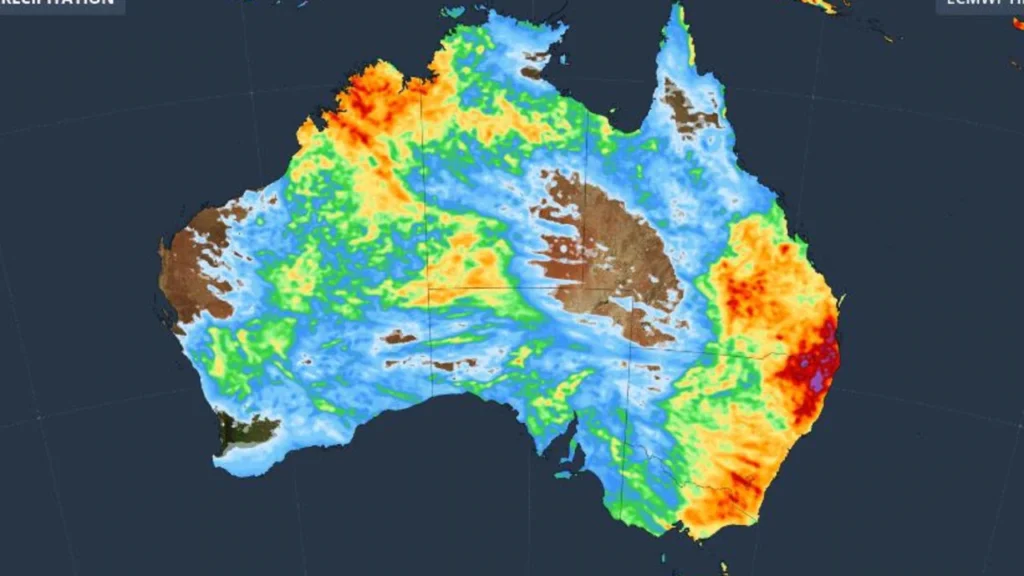Thunderstorms are expected to hit parts of Australia every day, and millions of people are expected to be affected by the weather.
According to Ben Domensino, a meteorologist with Weatherzone, the storms will most likely continue next week because of the unstable atmosphere and the lifting mechanism that allows air to rise from the ground.
According to Domensino, the warm waters around Australia will help in the circulation of humid and warm air in the atmosphere, which will then trigger thunderstorms.
He also noted that cold fronts, mountain ranges, and low pressure troughs will act as triggers. These weather conditions are expected to affect areas such as Queensland and NSW on Monday.

Thunderstorms are expected to affect areas in the eastern and northern states as well as Western Australia through the middle of next week.
On Wednesday, severe storms were predicted to hit Sydney, Canberra, and Brisbane.
These storms should continue to affect the country’s east and north while also extending to WA’s south due to the cold front that will affect the region on Thursday and Friday.
The low pressure troughs and the frontal system that will affect the country over the next couple of days will create more thunderstorm activity.
On Sunday, a massive crowd at a concert in Brisbane was forced to leave the venue after a violent storm hit.
The city was urged by the Bureau of Meteorology to be careful as thunderstorms were expected to affect the area late on Sunday. People were eventually allowed back inside the venue after the storm passed.
However, some of the concert goers were disappointed to learn that the event had been canceled.
According to Peta Trigg, a resident of the Sunshine Coast, she was informed about the concert’s cancellation on her way home.
She said that security personnel aggressively asked her and her friend to leave the venue. She noted that the event’s management should refund her and her companions.
Emergency services were called out to help stranded cars in the southern Brisbane suburb of Beenleigh. Some of the drivers were able to escape after their vehicles were caught in floodwater along George Street and City Road at around 8.40 pm.
A second car was also stuck in the floodwater at Knapp Creek, about a hundred kilometers away, shortly before 7 pm.
According to Miriam Bradbury, a senior meteorologist with the Bureau of Meteorology, the storms that hit the region brought heavy downpours, lightning, and flash flooding.
She noted that southeast Queensland received up to 50mm of rain. “There were also isolated falls of up to 80mm as the storms moved through,” she said.
The combination of these conditions can cause the drainage systems and waterways to become overwhelmed, which can lead to flash flooding.
More storms are expected to hit the Sunshine Coast and other areas in Queensland during the next couple of days. In addition, showers and thunderstorms are also expected to affect parts of NSW and southeast Queensland.
According to Ms. Bradbury, showers and thunderstorms will most likely occur over central and southern parts of the country, including the Northern Territory and South Australia. She noted that the storms could generate large hail and destructive winds until Thursday.
Areas in northeast NSW and southeast Queensland may also experience heavy rainfall and flash flooding until Friday.
The heatwave conditions that were experienced over the weekend in southern Queensland have started to diminish, lessening the intensity of the situation.
Even though there are no heatwave warnings in place, she noted that northern regions of the country are experiencing extremely hot weather, with temperatures of up to 5 degrees Celsius.
Areas inland may experience temperatures of up to 40 degrees Celsius. Heatwave warnings have also been issued for parts of Western Australia and the Northern Territory, as well as Queensland.
These areas are expected to experience extreme heatwave conditions until Wednesday.
According to Ms. Bradbury, the heatwave in Western Australia will start to ease up and move toward the Cape York Peninsula and the Northern Territory later in the week.
There’s also a chance that severe storms could affect areas in the Northern Territory, South Australia, and inland Western Australia.

